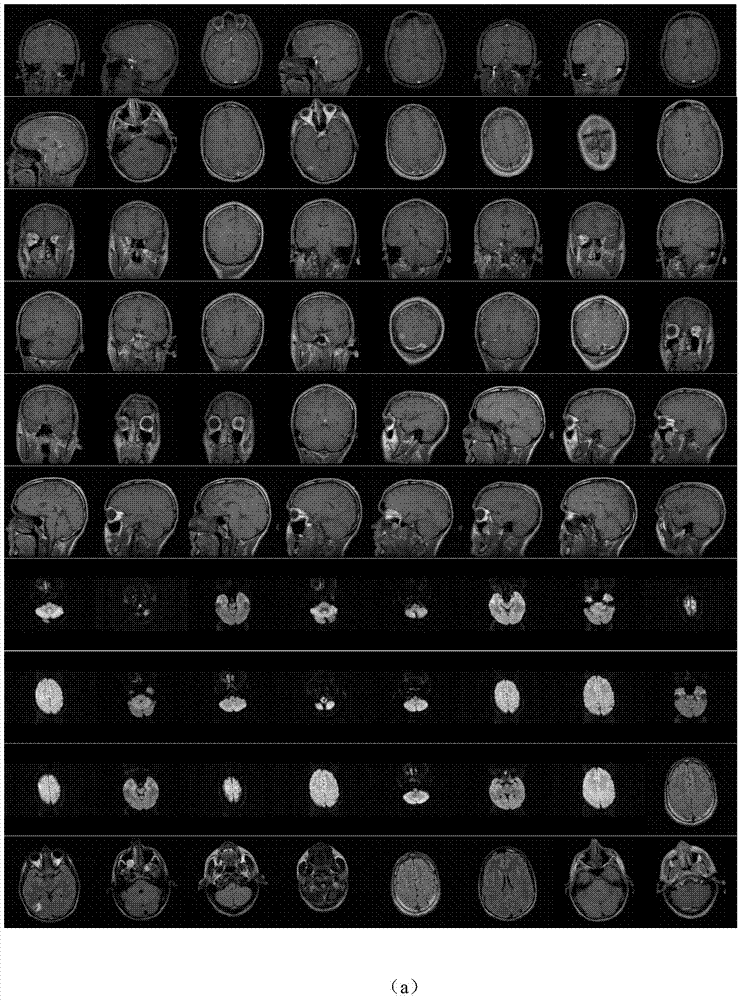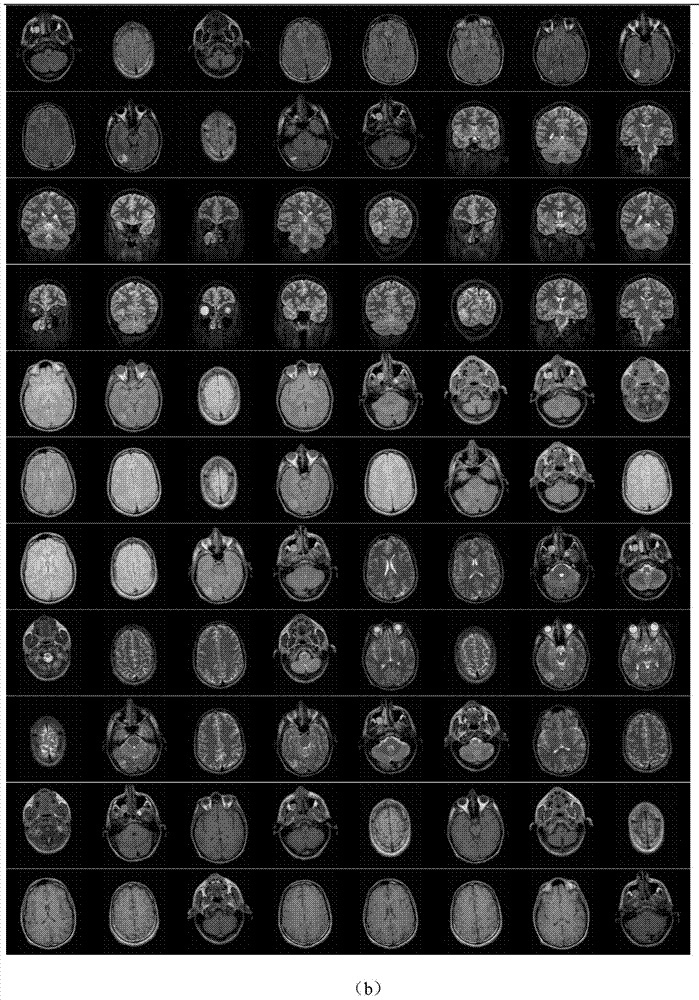A Large-Scale Medical Image Retrieval Method Based on Random Sparse Coding
A sparse coding and medical image technology, applied in special data processing applications, instruments, electrical digital data processing, etc., can solve problems such as poor versatility, difficulty in finding sufficient reasons, and improved resolution, achieving fast retrieval speed and retrieval The effect of improved accuracy and strong feasibility
- Summary
- Abstract
- Description
- Claims
- Application Information
AI Technical Summary
Problems solved by technology
Method used
Image
Examples
example
[0077] Example: figure 2 Shown are 189 MRI images, each image is composed of 160*160 grayscale values, it is assumed that these images constitute an image database. image 3 The image shown is the image to be retrieved.
[0078] (1) Variation trend of background computing time with image database size
[0079] By adding random noise to the 189 images, 1890, 18900, 189000 and 1890000 images were generated respectively. The purpose is to show how the time spent by the algorithm changes as the data size increases. By using 400 random images as the base, the background time consumption trend listed in Table 1 can be obtained. The results show that for a database containing 1.89 million images, the background computation time is about 10 hours. The background calculation time is mainly spent on the random sparse coding in step 2. It is worth emphasizing that the results of these background calculations should be stored on the disk in the form of files. If the database is upda...
PUM
 Login to View More
Login to View More Abstract
Description
Claims
Application Information
 Login to View More
Login to View More - R&D
- Intellectual Property
- Life Sciences
- Materials
- Tech Scout
- Unparalleled Data Quality
- Higher Quality Content
- 60% Fewer Hallucinations
Browse by: Latest US Patents, China's latest patents, Technical Efficacy Thesaurus, Application Domain, Technology Topic, Popular Technical Reports.
© 2025 PatSnap. All rights reserved.Legal|Privacy policy|Modern Slavery Act Transparency Statement|Sitemap|About US| Contact US: help@patsnap.com



